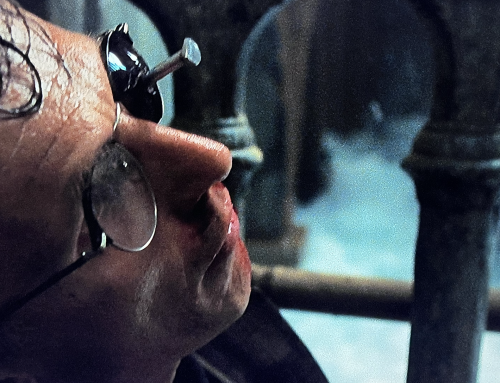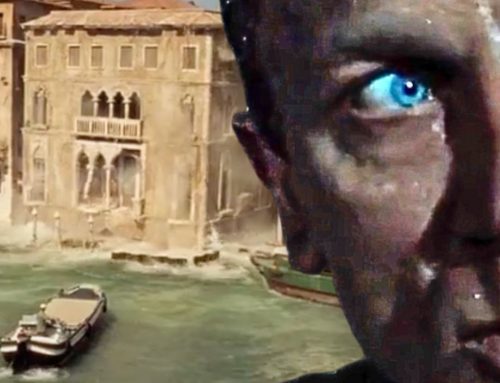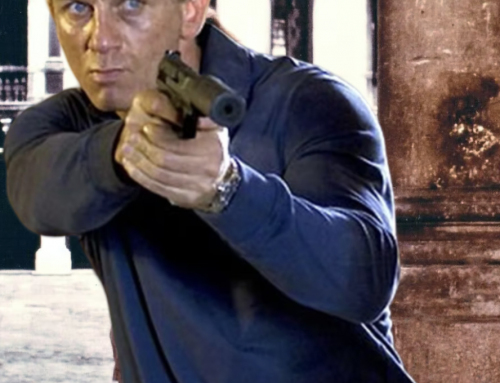He’s a blunt instrument, dressing sharp and sexy with plenty of money. It’s such an inspiring vibe.
Article by Eisuke – Inspired by Bond.
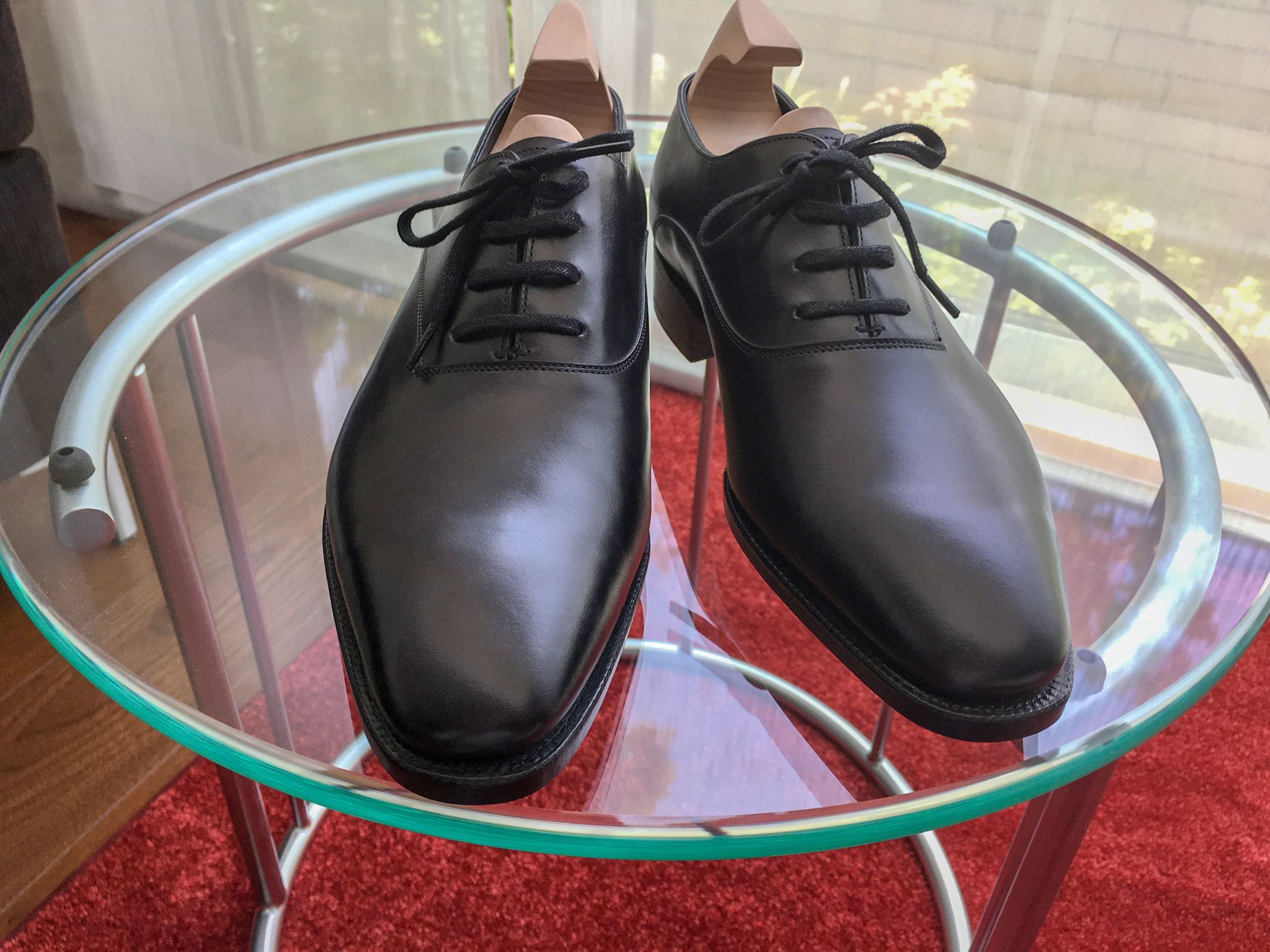
The brands
James Bond’s shoes have undergone several brand changes over the franchise – with one Bond actor being a patron for one or two shoemakers each. Primarily John Lobb Ltd. for the Connery era (with one mystery shoemaker for Goldfinger – perhaps Church’s?), George Cleverley for On Her Majesty’s Secret Service, mostly Ferragamo and Gucci for the Moore era, and mostly Church’s for the Brosnan era. Did I miss someone out?
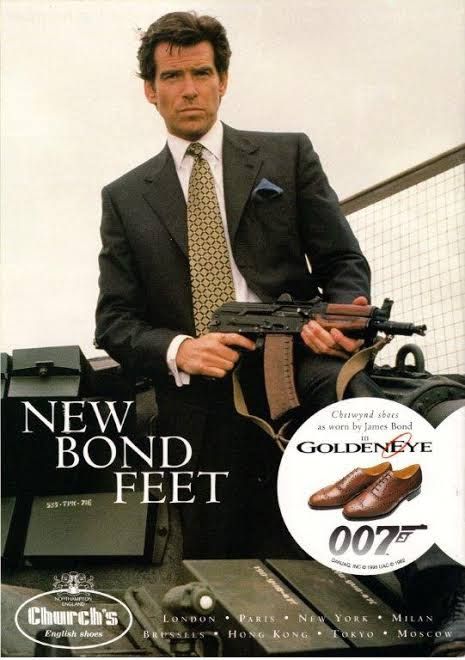
Lindy says,
According to an interview with Lindy Hemming on Mi6HQ, Daniel Craig for the first time wears shoes from “London cobbler” John Lobb. At first, it sounded as if Craig was wearing bespoke shoes made in their St James St brick-and-mortar store, but after some simple guesswork, it was more than clear that Craig wore John Lobb Paris shoes for the film.
Read our full interview with Lindy Hemming in the book From Tailors with Love: An Evolution of Menswear Through the Bond Films.

Where are they made?
This does not mean the Paris version is an inferior dizygotic by any means. The shoes are made in Northampton, where almost every British shoe brand you can name has a factory. However it’s quite unlike the typical British shoe with a clear Continental influence to the look and the make of them. This is a clear example of a brand that morphed into something “sexier” with the influence of European capital and backbone.
Personally, I’m a huge fan of the idea of Daniel Craig’s Bond wearing John Lobb Paris shoes. The mismatch, or “gap” between his brash, macho, young portrayal, and these well-crafted, artisan shoes exudes a sort of fashionable quirkiness unique to his Bond.
According to Raccoon, the customer experience in the John Lobb Ginza store was exquisite, yet ball-squeezing. Upon filming the storefront, they gave off the “what are you looking at?” pressure so much that Raccoon felt obliged to enter the store, even though his appointment wasn’t until hours later. They didn’t allow in-store photography, though Raccoon recalls another room further inside the store, presumably for their bespoke customers.

The service
The hospitality factor was seemingly impressive. They included a generous handwritten letter in the shoebox and added in shoe trees by default. John Lobb were dead serious about their profession, and the atmosphere dictated you should be too.
They measured Raccoon’s feet and originally brought him the Luffield shoes, though they were quite certain another pair was also in the film, which were these Becketts shoes. After a confident claim by the clerk that these shoes were the ones used in the film, Raccoon decided to get these shoes instead.
Just out of curiosity, he asked for their bespoke starting price, and they replied “1,300,000 yen.” For those who don’t speak yen, look it up… (Octopussy theme plays).
Before we get into further details, the basic idea behind this shoe is that it is an Oxford shoe. This is any shoe where the facings of the quarter are sewn underneath the vamp, resulting in a closed lacing that makes the shoe more formal than derbies (open lacing, like the Luffield). Considering the formality of the design, it works best with the more formal looks in the film, so they are most at home with worsted suits and dinner suits.
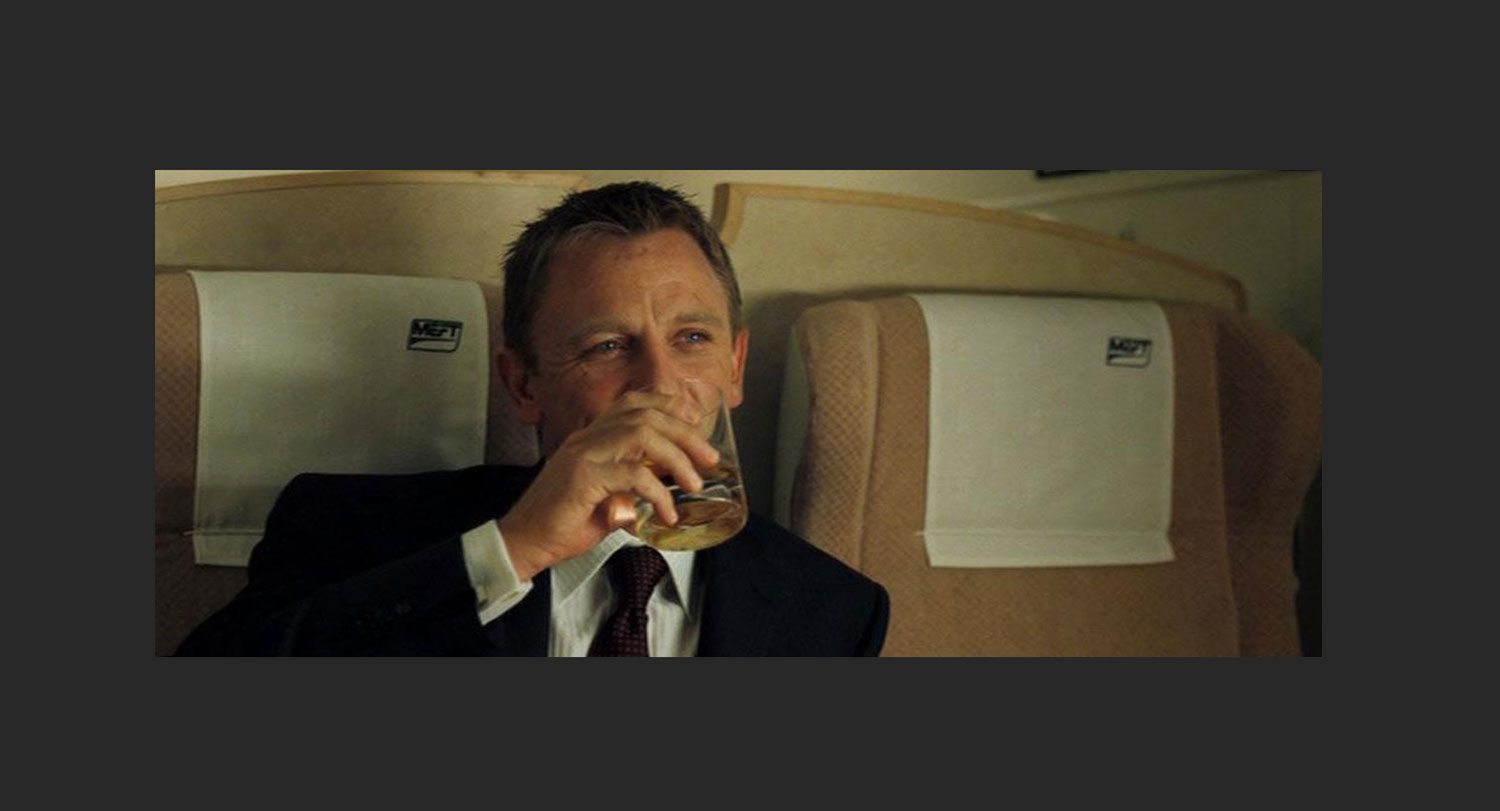
What scene?
However, Craig’s Bond strays away from the textbook and wears his Luffield shoes, a derby shoe that is his primary workhorse of the film. With the other scenes featuring him in either trainers or his other Romsey boot, it’s likely that these shoes were either not used for the film, or worn with the striped suit on the train where his footwear is not seen.
As we shed light on this most minor pair of shoes in the film, let’s dissect every detail there is of these shoes and see just how Bond-worthy they are.
The John Lobb “Becketts” model is named after a corner in the Silverstone race circuit. Its brother shoe, in that vein, would be the “Chapel” which is a double monk style shoe. Unfortunately, John Lobb does not (yet) offer the “Maggots” which would be a remarkable name to put on shoes you want to sell for three months worth your salary.

Secret tanners
The kind of leather used for these shoes is called “Museum” calf. It’s a kind of leather that’s pre-treated upon applying patina to create a marble-like, smoky, inconsistent effect on the colour. The result is not just plain black, but something with a depth to it in various forms. John Lobb Paris keeps their tanners a secret, so we do not know how exactly this effect is achieved.
Nevertheless, it’s an interesting variant on the typical black calf and something that immediately marks the shoe as a high-end, John Lobb exclusive shoe. Since the shoe is a, higher than the Standard line shoes, I’d assume they use veg tanned butt leather, which is the best kind of leather out there almost exclusively used by bespoke shoemakers.
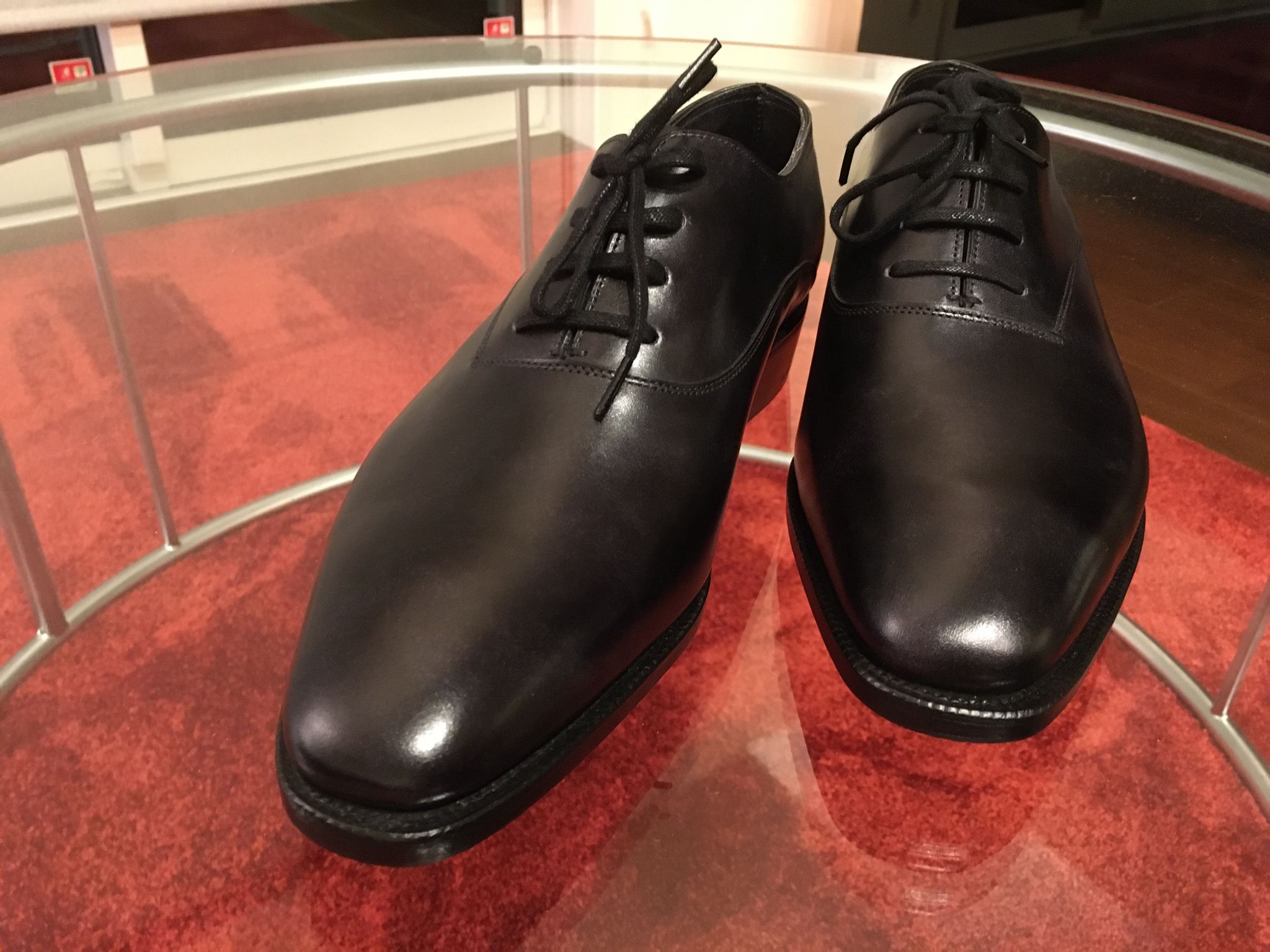
Eyelets
The shoe has four eyelets, meaning the laces go through four rows of holes. It would have been the first time for Bond had he worn this shoe on screen, given his tendency to stick to three eyelets for business shoes, and two eyelets for boots. British shoemakers tend to stick to odd-numbered eyelets for shoes (if you’re in doubt, have a look through Crockett & Jones’ men’s collection), meaning the four eyelets seen here are something of a non-British influence here.
Some people might say “But Church’s used to do six eyelets on their Diplomats (referring to Brosnan’s semi-brogues in Goldeneye), but again that is a rarity that gives off an international feel. Plus, they’ve reverted to five eyelets today, the classic British configuration for brogues.

Continental vibe
The last is their 8000 last, which is a semi-squared last that appears to have a slightly elongated silhouette. It’s reflective of the times (2006) but it’s an elegant, sporty look that doesn’t appear particularly off today. Though again, compared to the rounder lasts that British shoes are known for, it accentuates the Continental vibe a notch further.
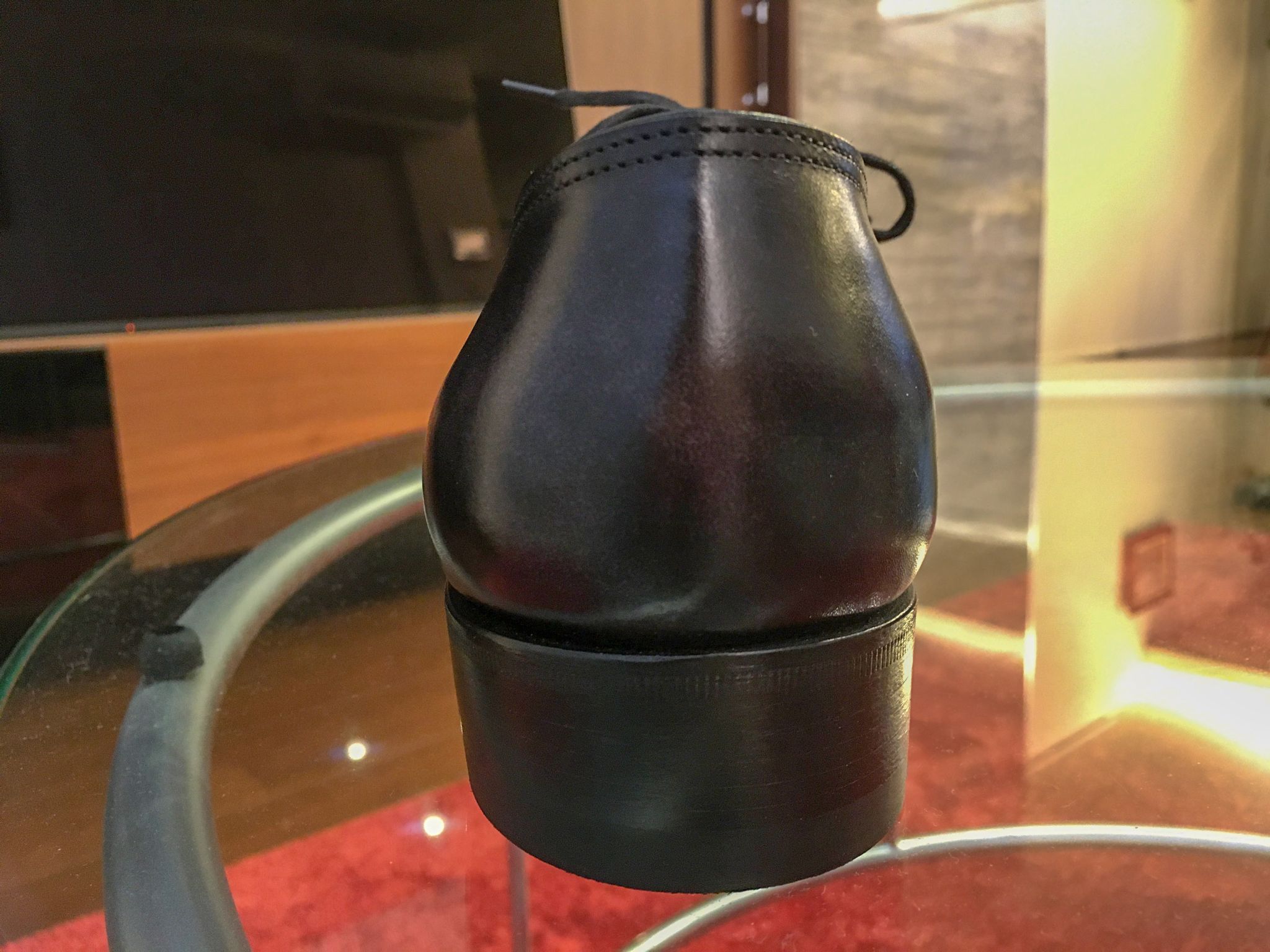
Recent Trends
The heel is what’s called a “seamless back,” meaning there’s no row of stitching seen from the outside. It’s exclusively seen on high-end shoes, since it takes extra effort to achieve this look.
The biggest misperception behind this shoe is that it is a “wholecut oxford,” which was in the rage of popularity a while ago. Perhaps it still is. The seamless heel confuses people to believe so. A wholecut is a shoe where the upper is made from one single piece of leather. It’s clean, simple, and certainly in line with the minimal idea behind dressing Bond that roots back to the Connery era. This style was first worn by Bond in Skyfall, and it’s more or less a recent trend.

Daniel Craig in Skyfall (2012) wearing Crockett & Jones
Close Observation
Upon close observation of the Becketts, you might notice that it’s not the upper that’s wholecut – but instead the quarters that are wholecut. Quarters are usually cut with two pieces of leather on the outside and two on the inside, resulting in four pieces of leather.
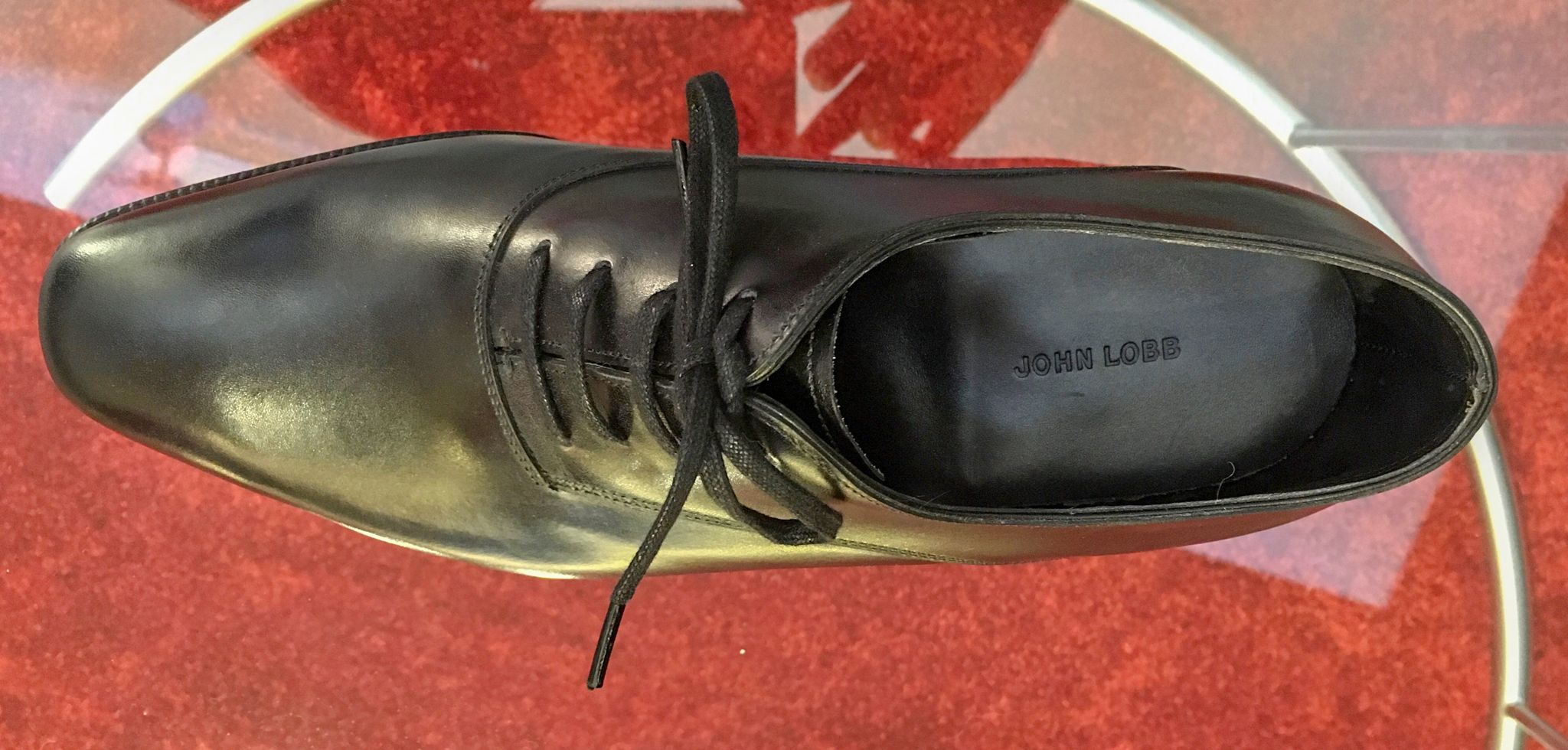
Twin Stitching
However, these Becketts shoes are made with one single upper piece and one single lining piece. This makes the quarter’s curve shape on the inside and outside of the shoe relatively easy to achieve, but in order to do so, the upper and lining piece must align perfectly to achieve this curve.
Further accentuated by the twin stitching detail, this is probably why this shoe is called the “Becketts” – a sweeping side seam that resembles a circuit. It’s very complex, and certainly more than appropriate to qualify as a “Prestige Line” shoe.
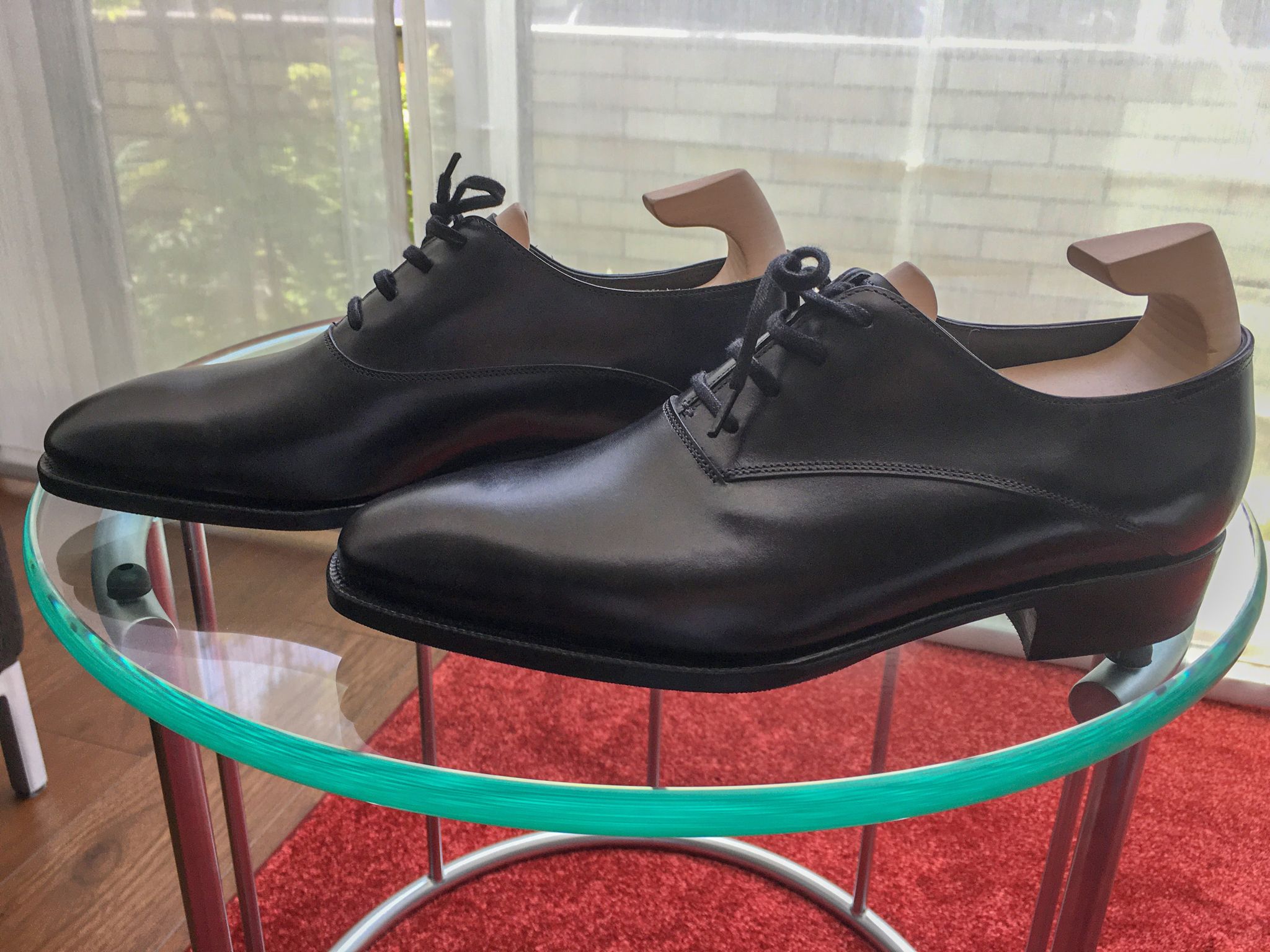
The Concept
Observing the back of the shoe in detail, this shoe is done with what’s called “channel stitching.” Raccoon ordered his with a half rubber sole, obscuring this, so to explain the concept these are images of the Crockett & Jones “Alex” and “James” models, respectively. (These are real “wholecut oxfords” by the way).
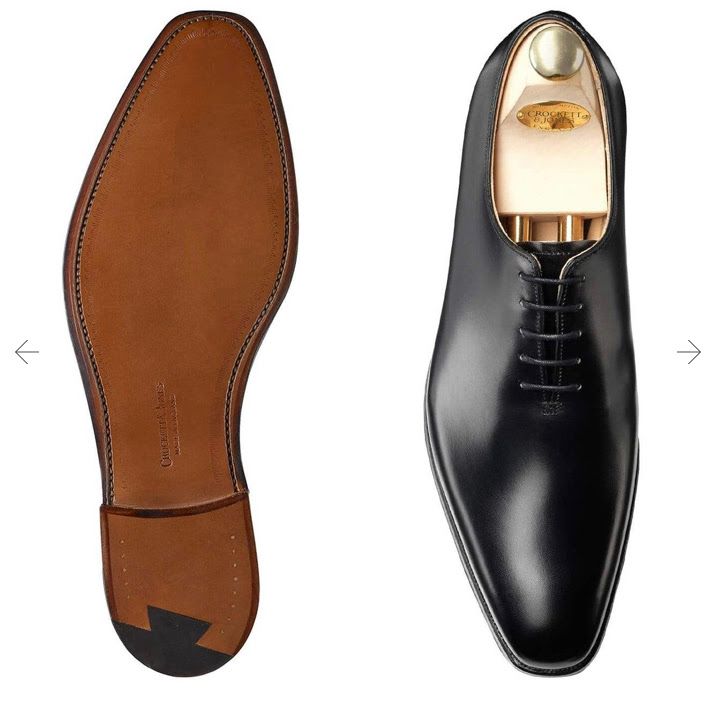
Dressy Feel
The newer and more expensive “James” model is done with this “channeled stitching” method, while the “Alex” is done with the more common “open stitching” method. The former method provides a sleeker, dressier, tidier look on the sole with the row of stitching hidden underneath the sole, while the latter exposes this channel. The channeled stitching seen on the Becketts conjugates well with the clean, dressy feel of the shoe.

Fudged
Getting into even more minute detail, look very carefully at the rim of the welt. The shoe is fudged (it’s the ridges you see on the welt), but the stitching cannot be seen. I have absolutely no idea what this is called, but based on a practicality analysis, this isn’t the best kind of shoe there is.
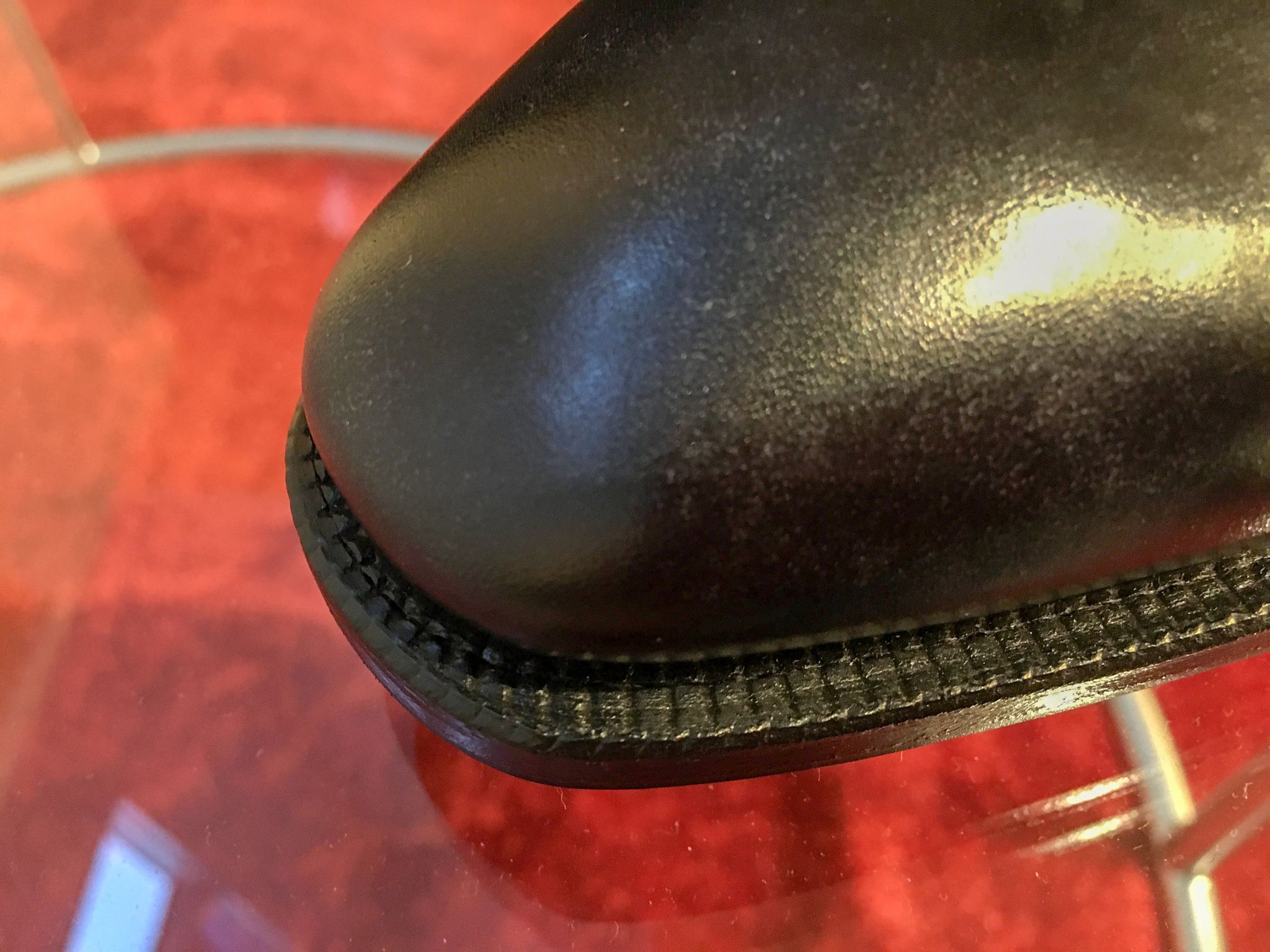
In theory
Just to touch upon briefly on what I’m talking about here, these ridges are kind of like a guideline the shoemakers add to the welt so they know where exactly the stitches will fall. The process of adding these marks on the welt is called “fudging” or “wheeling,” because shoemakers add in these ridges with what’s called a “fudging wheel.”
In theory, the more fine these marks are, the more densely stitched the welt would be, because the stitching is supposed to follow these wheeled marks. Below is an example image of what I mean here – look at the ridges and the threads right behind them.

Special technique
However, the reality is that not many shoemakers today actually use their fudging as guidelines anymore. It’s more of an aesthetic thing now. So there could be very fine fudging, but the actual stitch count could be much wide apart. There’s nothing wrong with that, as long as it functions well as a shoe it’s all that matters.
However, getting back to the Lobbs, we can see the fudging is there but not the stitching. This is achieved by a special technique used upon outsole stitching to obscure where exactly the stitching has fallen, to create a dressy look. Below is an image of another shoe that shares the same principle, but in a more visible colour.
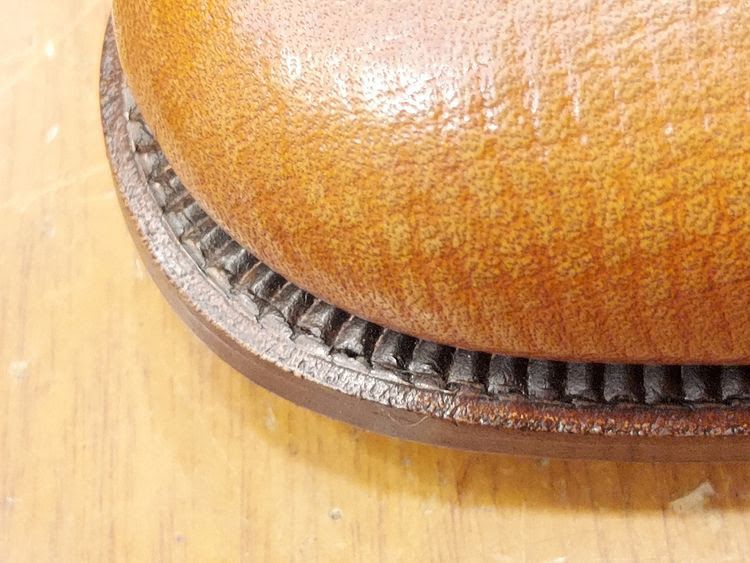
Hidden stitching
One reason people love Goodyear welted shoes (which this shoe is) is how easy they are to resole. This means if the sole wears out, it can be taken off and replaced with a brand new one. If your Goodyear welt has visible stitching, it’s more or less straightforward for the cobbler – all they need to do is remove the welt as per the stitching, just follow the threads.
However, if the shoe has hidden stitching like these Becketts, things get much more complicated. The cobbler has to guess where the threads run (it’s still there, just hidden) and outsole stitch based on approximation.
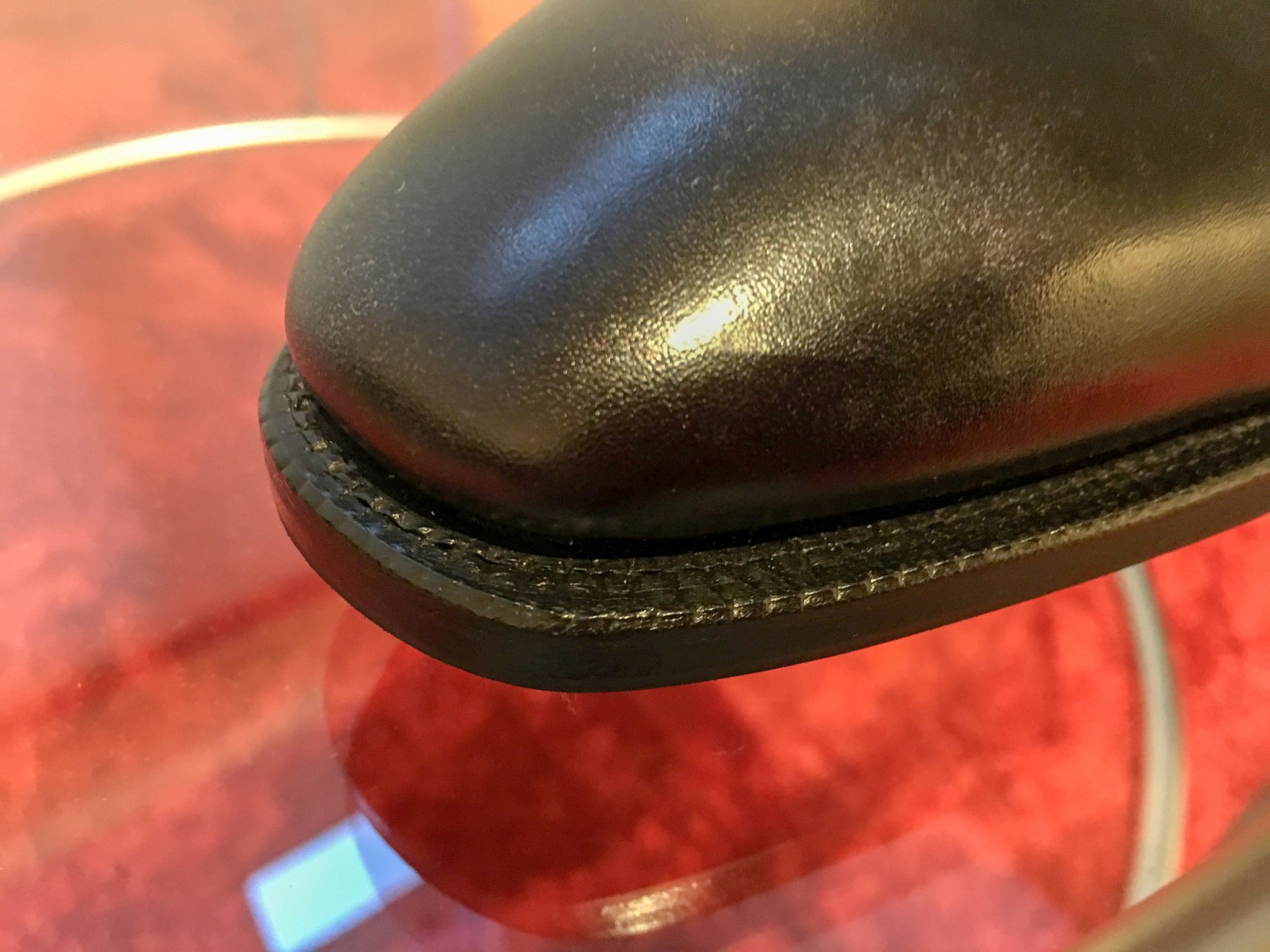
Goodyear welted shoe
That’s why many cobblers hate this feature, because from the moment the repair starts it’s a guessing game on which approximate pitch the stitching runs through. Adjust the outsole machine, and tearing it open is like opening Pandora’s box. So when the shoe needs to be resoled, the welt loses its pristine sleekness, and worst-case scenario necessitates a welt replacement before the second resoling. And what did I say was the benefit of a Goodyear welted shoe?
There are some benefits to this hidden stitching method though. It’s above everything extremely elegant. It undeniably gives the look of a bespoke shoe, and necessitates high levels of craftsmanship. This feature is commonly seen on Crockett & Jones Handgrade models and John Lobb Prestige Line shoes, which means they’re only seen at the very best level.
It’s best to take these back to the brands when you want to repair them, as they’d know exactly where the channel pitch is, and they can easily exchange the welt should they mess anything up.
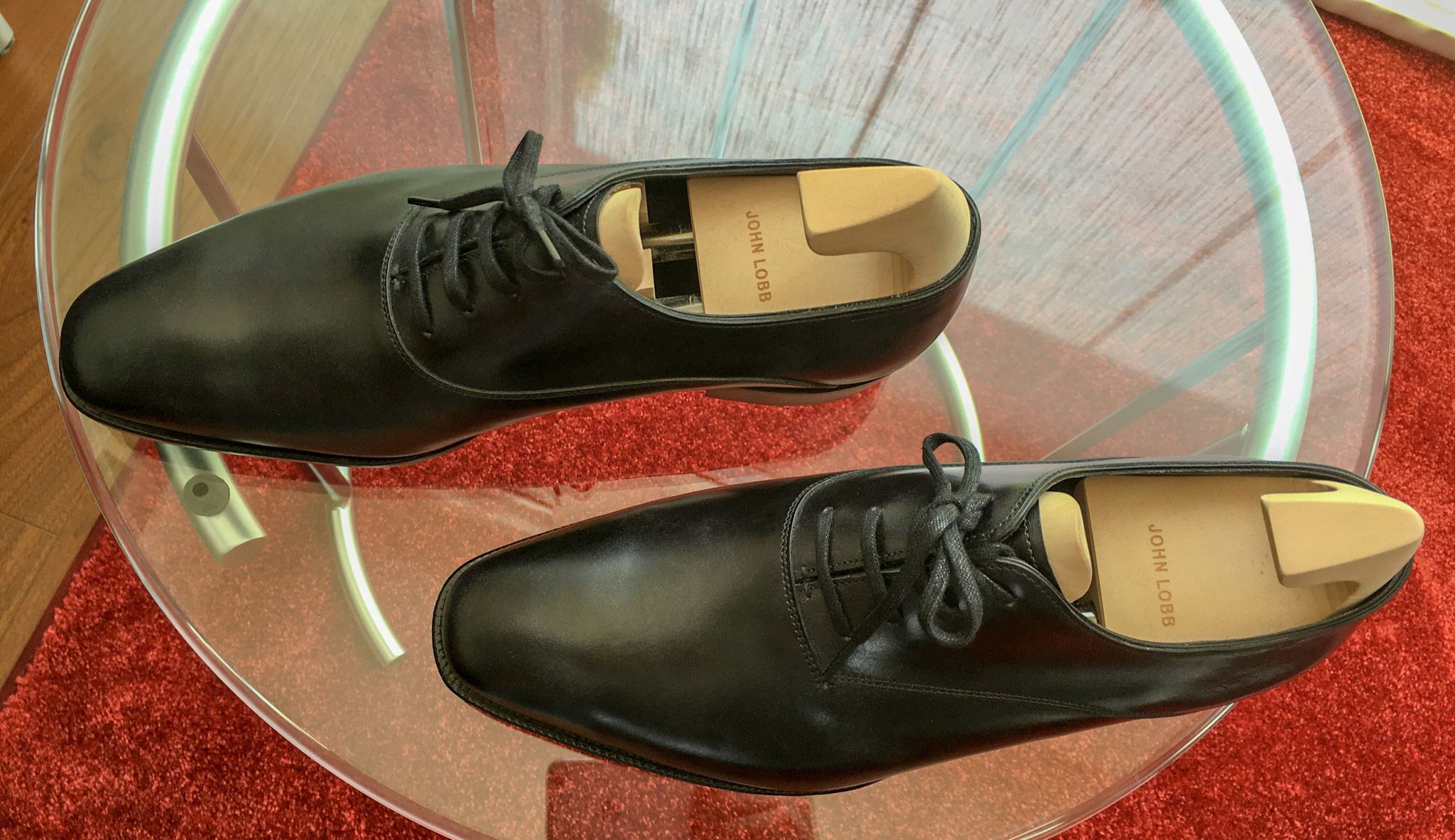
No-joke shoe
However, is this complexity in design appropriate for Bond?
One could argue shoes should be fun given the hardly noticeable variance in design, but consider the setting and formality you would expect to see these shoes. One would only pull out their plain-toe oxfords expecting a more formal situation (as Mr. Gaster also mentions in his review), so you want them to do their job as a serious, no-joke shoe, which is a much more important value than being the creative stand-out shoe.
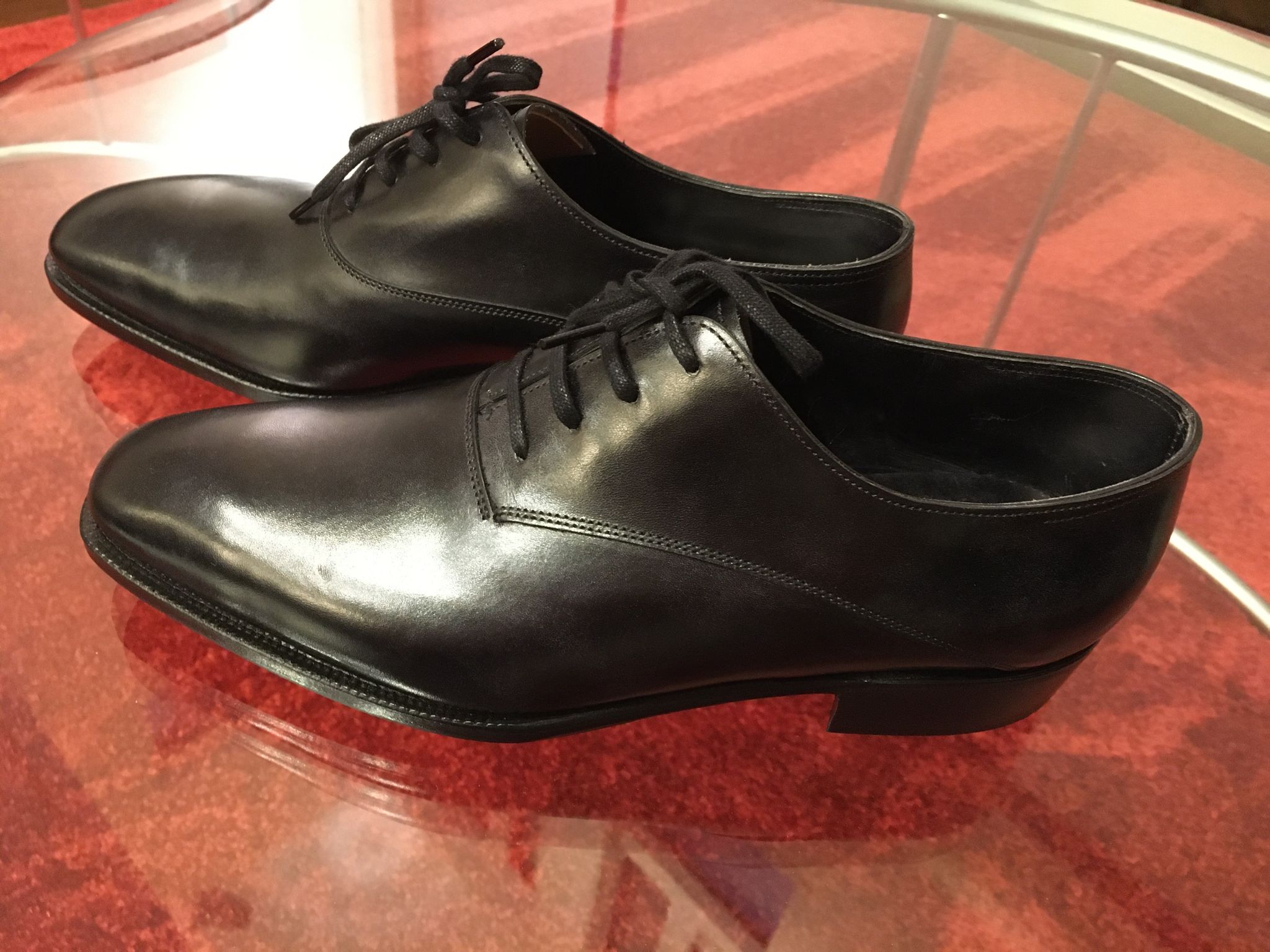
Quintessentially French
Does this shoe do that? Well, I’d say it’s fine. It’s a smidgen more flashy in comparison to Connery’s shoes, but looking back at Moore’s fun Italian loafers and slip-on boots, this is well within the understated Bond style capacity.
I wouldn’t call them British shoes, as they simply aren’t, for all the reasons I stated above. It’s a quintessentially French pair of shoes. Craig continuing in that direction would have brought Bond into a completely new realm of style. But hasn’t he done so already?

Fun twist
Nevertheless, it’s a fun twist on the classic Oxford shoe. Albeit almost entirely Parisian in aesthetic, it’s a spectacular shoe that works effectively on any sharp outfit. Now for the money to get them.
Credits & Disclosure
Article by contributing editor Eisuke Ochiai. Follow Raccoon on Instagram here. These claims are merely conveyed by the brand to Raccoon personally, without proof of a purchase order or continuity sheet.



